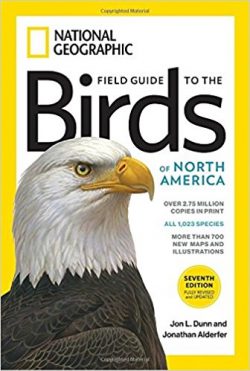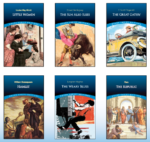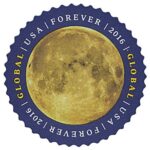![[Bird Icon]](https://riverhouses.org/wp-content/uploads/2024/05/emoji-bird-150x150.png) May is our special Bird Migration Month in the River Houses — we think bird study is one of the best subjects you can take up in a homeschool environment. But how can you find out what birds are present and migrating through your local area? A good bird guide will give you a general idea, but what about week by week in your specific state, county, or town?
May is our special Bird Migration Month in the River Houses — we think bird study is one of the best subjects you can take up in a homeschool environment. But how can you find out what birds are present and migrating through your local area? A good bird guide will give you a general idea, but what about week by week in your specific state, county, or town?
For that information you can turn to the wonderful eBird.org website, sponsored by Cornell University. eBird is a big site with many features and services, and it will not only let you record your own bird observations (something we recommend to homeschoolers every year), but it will also show you summary data for any part of the United States (or the world) for the whole year.
Suppose you’re a homeschooler in Minot, North Dakota (to select a random location). Minot is in Ward County, so if you use eBird’s geographical browsing tools you can navigate your way to the seasonal bar charts for Ward County, North Dakota. Here’s a sample of what they look like:
![[Migration Chart]](https://riverhouses.org/wp-content/uploads/2019/05/ebird-minot-nd-migration.jpg)
Can your students see how to interpret this chart? Learning how to read charts, graphs, maps, and diagrams is one of the most valuable skills any student can develop! In this chart, each row represents a species of bird: Bobolink, Western Meadowlark, Eastern Meadowlark, Orchard Oriole, and so on. The columns represent the weeks and months of the year, from January through December. The thickness of the green bars indicates how frequently each species has been reported during a given week. For example: the first few Bobolinks begin to arrive during the first two weeks of May; they become more common by the end of the month and are regularly seen through June and early July. By August and September, although they’re still present, they aren’t seen as frequently as they were during June and July; and then by the end of September they’re gone, except for an occasional straggler.
So if you’re a homeschooler in Minot, North Dakota, the Bobolinks arrived at the beginning of this month and the Baltimore Orioles arrived soon after; by the middle part of May the Orchard Orioles have joined them. Western Meadowlarks, Red-winged Blackbirds, and several other species arrived earlier in the season and by mid-May they have settled in for the summer.
But where can you go to see these birds? If you switch from the bar-chart view to the map view in eBird and then zoom in, you’ll get something like this — it’s a mid-May map for Western Meadowlarks in the Ward County, North Dakota, area:
![[Meadowlark Map]](https://riverhouses.org/wp-content/uploads/2019/05/ebird-western-meadowlark-minot-nd.jpg)
If your students can understand and interpret a professional map like this they’ll be ready for all kinds of academic work in science. What the map shows is all the Western Meadowlark sightings that have been entered into the eBird database for this region of North Dakota. The red symbols stand for current observations made the last 30 days. The blue symbols are for observations older than 30 days (and often going back many years). The larger symbols are eBird “hotspots” — public locations such as parks and wildlife refuges that anyone (including you and your students) can visit and explore. If you click on those symbols on the live copy of the map on the eBird website (not the static image shown above), you’ll be able to see more details for each individual location. (The map key on the live page explains all these symbols and the information they represent. Be sure to show your students how to use it.)
But what if you don’t even know what a Western Meadowlark is? 😊 We do recommend an excellent bird guide for all homeschool families — printed books are often the best educational tools, especially for young people — but there’s also a great deal of information that’s available online directly from the eBird website. If you click the species name in the seasonal bar chart, for example, you’ll get a detailed profile that looks something like this:
![[Western Meadowlark]](https://riverhouses.org/wp-content/uploads/2019/05/ebird-western-meadowlark.jpg)
The eBird website is a wonderful resource that can become a regular part of your work in homeschool science and natural history, during migration season and at any other time of year as well. Bookmark it and give it a browse, and see what avian visitors are passing through your homeschool neighborhood this month. 😊
❡ Books in the running brooks: Our recommended homeschool reference library includes an excellent bird guide that would serve your homeschool well. Many other similar guides are also available — find one that’s a good fit for your family and take it with you on all your outings, whether far afield or just out to the backyard. 🦉
❡ Come, here’s the map: Natural history and geography are deeply interconnected. One of the first questions you should teach your students to ask about any kind of animal or plant is, “What is its range? Where (in the world) does it occur?” Our recommended homeschool reference library also includes an excellent world atlas that will help your students appreciate many aspects of biogeography, the science of the geographical distribution of living things. 🌎
❡ Nature notes: This is one of our regular Homeschool Natural History posts. Add your name to our weekly mailing list and get great homeschool teaching ideas delivered right to your mailbox all through the year. 📫
❡ Homeschool calendars: We have a whole collection of free, printable, educational homeschool calendars and planners available on our main River Houses calendar page. They will help you create a light and easy structure for your homeschool year. Give them a try today! 🗓
❡ Support our work: If you enjoy our educational materials, please support us by starting your regular Amazon shopping from our very own homeschool teaching supplies page. When you click through from our page, any purchase you make earns us a small commission at no extra cost to you. Thank you for helping us to keep going and growing! 🛒
❡ Join us! The aim of the River Houses project is to create a network of friendly local homeschool support groups — local chapters that we call “Houses.” Our first at-large chapter, Headwaters House, is now forming and is open to homeschoolers everywhere. Find out how to become one of our founding members on the Headwaters House membership page. 🏡




